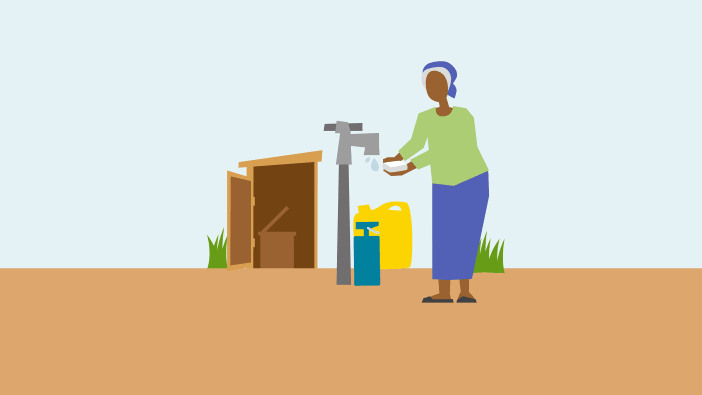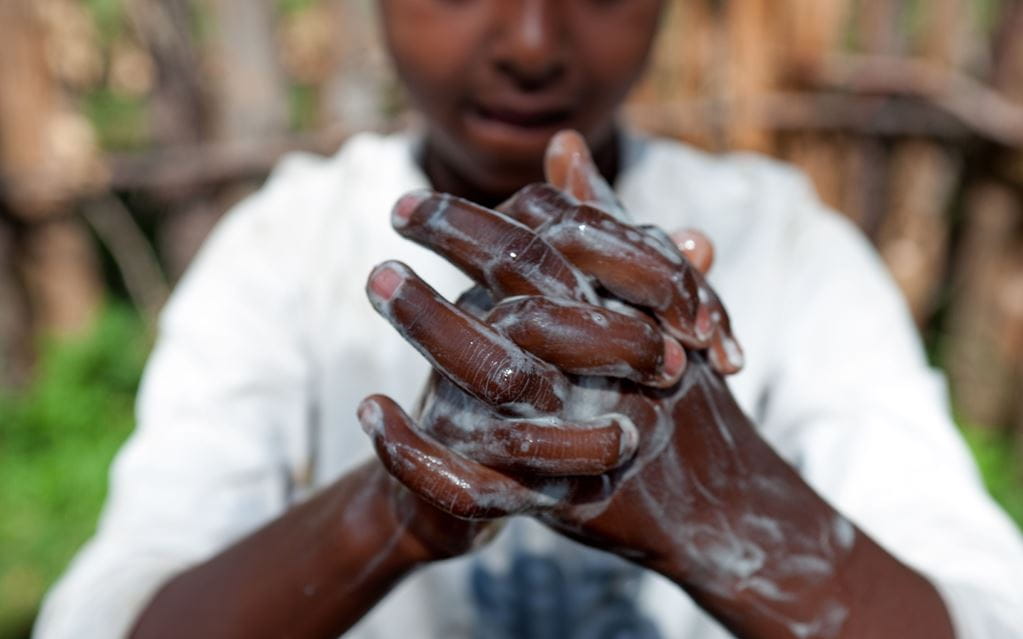Gender and WASH
Addressing the needs of women and girls in relation to water, sanitation and hygiene is key to achieving gender equality.
Globally, women and girls are still the primary water collectors in their household. They are still the main carers when children or others get sick with diarrhoeal diseases. Day after day, they secure water that is essential for food security and livelihoods.
Yet despite these responsibilities, unequal access to water and land means that women are disproportionately affected by the lack of water.
Women and girls are particularly vulnerable to abuse and attack, often having to wait until dark to relieve themselves in the open and in unsafe toilets, or where they have to fetch water from remote locations.
Tearfund involves both women and men in planning and managing water and sanitation services. We prioritise women's needs, concerns and preferences through a gender-responsive approach to projects. We work to empower women to share their knowledge, develop their skills and strengthen their decision-making powers.
Evidence supports that this approach to gender mainstreaming can increase women's influence, visibility and participation within their own communities and in community-based WASH initiatives.
Explore Tearfund’s guidance notes on gender and WASH
Conflict and WASH
When working in conflict contexts, it is important for projects to be sensitive to their impact on the dynamics and drivers of the conflict. In the case of water, sanitation and hygiene (WASH) projects it may be possible to design activities to have a positive impact on the conflict itself, rather than just on WASH needs.
Tearfund's conflict-sensitive approach to WASH in conflict-affected and fragile states is based on a growing understanding of the contribution of WASH service delivery to peacebuilding and state-building. WASH programming can provide a key entry point for capacity building (strengthening governance and accountability) and infrastructural development, as well as acting as a vehicle for citizen engagement, community mobilisation and empowerment.
Explore Tearfund’s guidance notes on WASH in fragile and conflict-affected states
Environment and WASH
All projects are both affected by and affect the environment. Environmental sensitivity and sustainability are key in any WASH programme.
Universal access to water, secure sanitation and hygiene are fundamental to achieving sustainable development. Although the Millennium Development Goal for Water was met, the United Nations Member States have established new commitments to Sustainable Development Goals (SDGs), which aim to end extreme poverty by 2030. The SDGs recognise the need for sustainable hygiene practices, water and sanitation services and systems, so that WASH provision can continue to meet people's needs over the long term by adapting to changing circumstances, stresses and shocks.
Tearfund recognises the dynamics and feedback processes between water users and the environment and the need to base WASH approaches on an understanding of these processes in the local context as well as on national and global influences.
Explore Tearfund’s guidance notes on the environment and WASH
Inclusivity and WASH
Tearfund works with everyone in the local community – men, women and children – to make sure they have equal access to suitable, secure and sustainable water and sanitation services. Often greater support is needed for people who are vulnerable, marginalised or discriminated against to ensure their rights and needs are equally recognised. This can mean working with local government to help them to address taboo issues like gender-based violence.
Even where there are WASH services, certain people are more likely to be excluded from accessing these, due to their vulnerability or marginalisation, or due to active discrimination. In almost all societies, this includes women and children, people living with disabilities and chronic illness, people with certain gender identities, people who belong to specific ethnic groups, religions and castes, people who have been displaced and those living in remote areas. These groups often experience limited opportunities, limited choices and limited freedoms, which makes them more vulnerable to poverty.
Evidence suggests that disadvantaged and marginalised groups are least able to provide sustainable WASH facilities for themselves and they are often excluded from relief and rehabilitation processes. Realising the rights of all to WASH will require us to target the most marginalised and disadvantaged groups as well as tackling many cross-cutting issues such as gender-based violence and land tenure insecurity.






